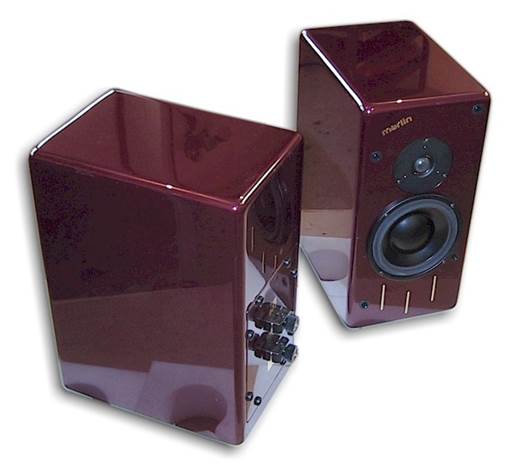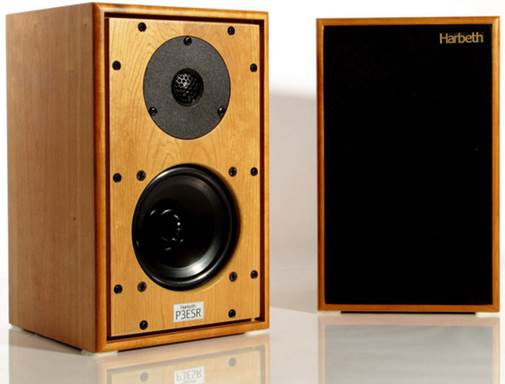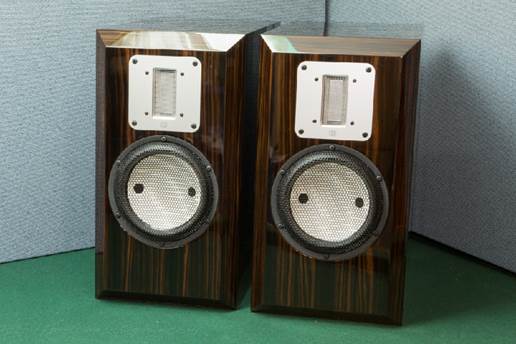I am amazed at the number of audiophiles I
meet, who buy speakers based on the size, exotic designs or some unobtanium
materials that some manufacturers claim, deliver superior performance. I am
also surprised at how some audiophiles assume that just because a speaker
carries a high price tag, it must deliver a high level of performance.
This is a pity, because with proper due
diligence, you can find modestly priced speakers which will significantly
outperform their more expensive, exotic looking counterparts. Unfortunately
many of these speakers do not get an audition because in many cases they are
endowed with unpretentious aesthetics and somewhat conventional designs. One of
the speakers that fall into this category is the Merlin Music TSM MMM ($3,080),
the subject of this review.

Merlin
Music TSM MMM Speakers
Design Features
The TSM MMM is a mini-monitor with a very traditional,
understated design that is unlikely to catch your eye at a dealer’s showroom.
However, if you choose to put this little speaker through its paces, it will be
quite a revelation.
The TSM is the brainchild of Bobby
Palkovich a highly regarded personality in the world of high-end audio whose
philosophy is to stay away from fancy designs and esoteric materials. Rather,
he prefers to stick with what is tried and true while constantly squeezing out
better performance from the same basic design with meaningful enhancements.
Some detractors have referred to these enhancements as merely tweaks but the
fact that these ‘tweaks’ have yielded significant and easily detectable
improvements does seem to indicate that there is a method to this perceived
madness.
For decades now, Bobby has bucked the
industry trend of offering marketing driven “dramatically new and improved”
designs. Instead, he has offered just two speaker models, the mini-monitor TSM
and the floor stander VSM. Aesthetically, they look more or less the same as
they did a couple of decades ago even though, in terms of performance, they are
worlds apart.
The TSM MMM was delivered in a largish
carton weighing around 63 pounds. The speakers were packed very professionally
and should be able to withstand a good deal of abuse during shipment.
Installation of the jumpers and RC networks was simplicity itself.
The TSM MMM has bulletproof build quality
and are quite heavy, given their modest size. They are offered in just one
color, studio black which is a matt, workmanlike finish. Other colors can be
had if you upgrade to the MXM, which comes in a premium high gloss, clear coat
finish. The MXM version comes in an array of very attractive colors including
Piano Black, Ruby Heart Red, Moss Green, Black Ice Blue, Pearl White and
Eggplant.
The TSM has a very small footprint and
benefits greatly if married to a solidly built, low resonance stand with good
stability. For the review I used the Sanus top-of-the-line Foundations Ultimate
Series stand filled with sand.
The TSM is a sealed, air suspension
enclosure and the cabinet is made out of pan fiber held together with super
strong polyurethane glue. The gently curving front edges of the speaker cabinet
minimize diffraction. There are three brass tuning rods on the front of the
speakers that serve to control the pitch movement of resonance patterns in the
unusually thick (1.5 inches) front baffle. They also lend an elegant touch to
the speaker facade.
The TSM employs matched pairs of
Renaissance 30.5 liquid cooled, silk dome tweeters and matched MW 164 pulp cone
woofers. The crossover is a highly optimized 12 dB per octave with a crossover
point at 2,150 Hz. It employs Caddock, Cardas and Hovland parts and the circuit
topology is of the same grade as its older sibling the VSM. Both drivers are
wired in electrical phase. The internal wiring is all point-to-point hand wired
using Cardas’ top of the line Clear, which is custom made for Merlin Music. The
terminals are the very cleverly designed Cardas no-stress binding posts, which
allow for bi-wiring. Bobby recommends against bi-wiring or bi-amping the TSM
unless specific wire gauges are used. The provided jumpers optimize the
performance of the tweeters.

I
strongly believe that, all else being equal, well-engineered two-way speaker
systems have distinct advantages over their three-way counterparts
I strongly believe that, all else being
equal, well-engineered two-way speaker systems have distinct advantages over
their three-way counterparts. It is a lot easier to design a crossover that
coherently blends two drivers as opposed to achieving the same level of top to
bottom continualness when blending three different drivers. Three sets of
drivers create an additional cancellation node, which adds even more to the
problem and makes it very difficult to achieve good coherence. In my
experience, two-way speaker systems also tend to be better at imaging.
The frequency response of the TSM MMM is 55
Hz to 19 kHz (+/- 2 dB, 1 meter on axis). To get the speakers to the optimum
toe-in position of 11 degrees, Bobby provides a wooden alignment tool that
makes it very easy, simple and quick to toe-in the speaker to just the right
angle vis-a-vis the sweet spot. The TSM is rated to handle up to 80 watts peak,
and has a sensitivity rating of 87 db. The warranty is an impressive 10 years
and covers both parts and labor. It’s one of the best in the industry. The TSM
is a very easy load to drive, even with relatively low output tube amplifiers.
This is because of its nominal impedance of 8 ohms with a minimum impedance of
6.5 ohms.
The TSMs are not too difficult to place. A
good starting point is the Cardas method that is available on the Cardas
website. From there it requires just a little tweaking to lock the sonic image
into place. The alignment of the speakers is also crucial to getting the best
out of the TSMs. Which brings us to the meat of the matter, the sound quality.
Having reviewed audio components for over 30 years now, I have come to expect
and accept some pretty significant compromises with speakers in the $3,000
price range vis-a-vis their more expensive counterparts in the $10,000 plus
range. It was therefore a pleasant surprise to hear the TSM, which kept those
compromises to a minimum.

The
sound quality of the midrange delivered by the TSM is equal to all but the very
best speakers I have heard in the $10,000 price range